
The exhibition traced the journeys of eight artists whose work Jehangir Nicholson admired and pursued and whose practices have undergone significant changes over the years.: Anju Dodiya, Atul Dodiya, Baiju Parthan, Nalini Malani, Sudhir Patwardhan, Sunil Gawde, Vivan Sundaram and Zarina Hashmi.
The journey was highlighted through a work by each of these artists in the Nicholson Collection juxtaposed with a current work that conveyed their present concerns. In each case, the difference or distance between the work in the collection and the recent work marked the shift that the artist had made, the twists and turns in the paths she or he had explored.
Following the course of these artists, we discover that the journey can be as exciting as the destination.

Sudhir Patwardhan was born in 1949 in Poona. He is a self taught artist and a practicing radiologist. He began painting seriously in the 70’s when he moved to Bombay. Patwardhan’s works centers around one poetically monumental panorama of an urban and natural environment The human figure remains the center of his painterly universe. His early paintings of construction workers, rickshaw drivers and railway porters possess an expressive urgency.
Patwardhan uses scale to maintain an emotional distance from his subject. Recording landscapes in transition has been a lasting interest for him. He often paints the suburbs, shanty towns and satellite townships where his subjects work and live.
Patwardhan’s canvases are densely populated reflecting the hub of city life often with emphasis on the ordinary, working man. His human forms are imbued with a sense of innate dignity as they go about performing their chores in busy city streets or in suburban construction sites.
Apart from several solo shows Patwardhan has participated in international exhibitions like ‘Aspects of Modern Indian Art’ Oxford, UK 1982; Contemporary Indian Art, Festival of India, London, 1982; Seven Indian Artists, Hamburg, West Germany, 1982; Contemporary Indian Art Festival of India, New York, 1985; Festival of India, Center George Pompidou, Paris 1986 and ‘Coupe de Coeur’ Geneva, 1987.
In 2004, a monograph on his work, ‘The Complicit Observer’ was written by Ranjit Hoskote. In 2007, Hoskote also wrote ‘The Crafting of Reality- Sudhir Patwardhan: Drawings’, which was translated into Marathi and a monograph in Marathi was published in 2012. Anjali Monteiro and K. P. Jaysankar have made a film on Sudhir. In 2012, the Mumbai theater group Awishkar staged a play ‘Chitragoshti’ based on Patwardhan’s paintings.
Patwardhan curated an exhibition of Indian Contemporary Art ‘Expanding Horizons’ which travelled around Maharashtra. He also curated a show at Guild Art Gallery, Mumbai and Sudarshan Art Gallery, Pune. He lives and works in Thane, Mumbai.
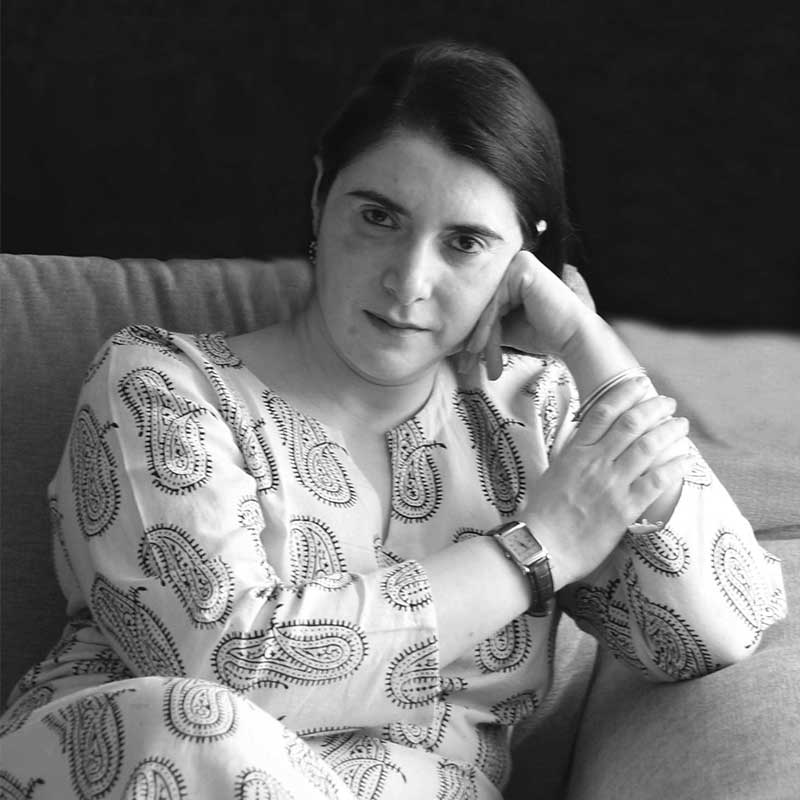
Anju Dodiya is born in Mumbai in 1964. She graduated from Sir JJ School of Art in 1986.
Dodiya’s early works were abstract and following her first show “A Fictional Autobiography”, she tried to refocus her gaze on railway stations, roadside scenes and so forth. But ultimately she found her original impulse of a painterly introspection as her strongest inspiration and re-channeled her vision into describing situations from her life.
She creates expressive watercolours layered with images and symbolism. Her art is rooted in the figurative, drawing inspiration from a range of artists including poet Sylvia Plath, filmmaker Ingmar Bergman, and Early Renaissance masters Piero della Francesca and Giotto. Bold patterns and vivid colours of Medieval French tapestries and Japanese woodblock prints also influence her works. Often autobiographical, her works reveal her interest in self-reflection and the process of self-discovery. Though primarily a painter, Dodiya has also produced intricate installations involving embroidered mattresses and shards of broken mirror.
The majority of her works give the viewer access to moments lifted from “the private discourse that goes on within oneself when one is alone”. Dodiya’s self keeps recurring in the changing pictorial contexts. These are inward looking investigations with a keen sense of self-awareness and introspection. Her works compel the viewer to unravel stories of the female protagonists, yet they don’t reveal the full narrative. Dodiya continually creates her own legends that are often self-disruptive autobiographies.
She has exhibited her works all over the country and the world, and has her works in various private and public collections. She lives and works in Mumbai.
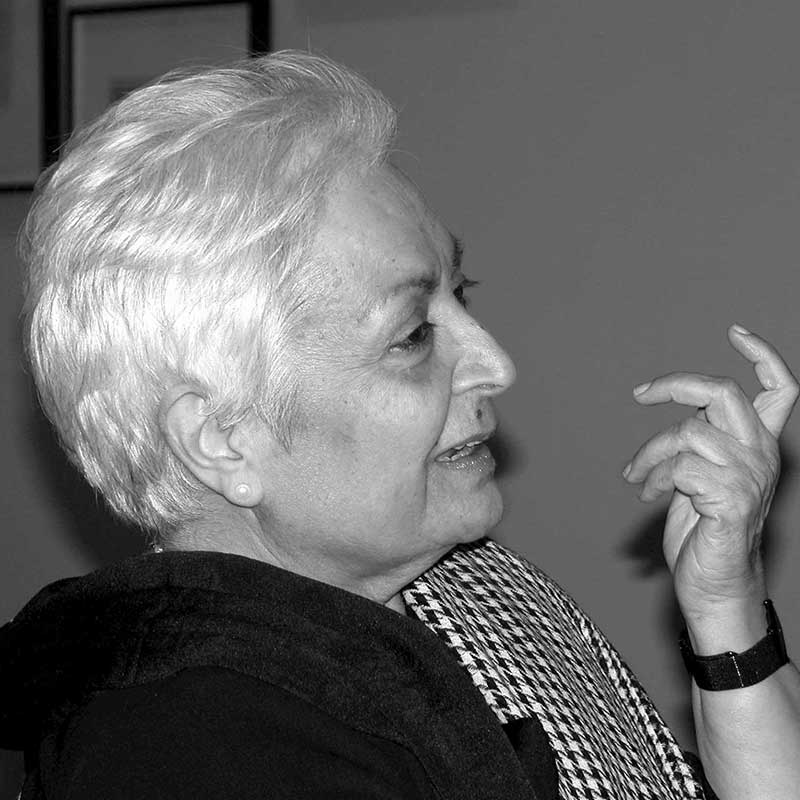
Zarina Hashmi was an Indian-born, American artist. Her work spans drawing, printmaking, and sculpture. Her art is informed by her identity as an Indian woman and having been born a Muslim. Her work evokes and explores the idea of home, distances, and trajectories, influenced by her own extensive travels. She used visual elements from Islamic religious decoration, especially the regular geometry commonly found in Islamic architecture. Her abstract and spare geometric style of her early works have been compared to Minimalists such as Sol LeWitt.
Born in Aligarh, India in 1937, she earned a degree in mathematics before studying a variety of printmaking methods in Thailand, France (where she was apprenticed to Stanley William Hayter), and printmaker Toshi Yoshido in Tokyo, Japan.
During the 1980s, Zarina served as a board member of the New York Feminist Art Institute and an instructor of papermaking workshops at the affiliated Women’s Center for Learning. While on the editorial board of the feminist art journal Heresies, she contributed to the ‘Third World Women’ issue.
Examples of her work are in the permanent art collections of the Museum of Modern Art, Whitney Museum of American Art, Victoria and Albert Museum, and Bibliothèque Nationale de France. Zarina was one of four artists/artist-groups to represent India in its first entry at the Venice Biennale in 2011.
The Hammer Museum in Los Angeles organized the first retrospective of her work in 2012. Entitled Zarina: Paper Like Skin, the exhibition travelled to the Guggenheim Museum and the Art Institute of Chicago. Her work has also been shown at the Victoria and Albert Museum, London; the Museum of Modern Art, New York; Kunika Art Gallery, New Delhi; CSMVS Museum, Mumbai; Bronx Museum of the Arts, New York and Gallery Lux, San Francisco.
In 2020, Zarina passed away in London.
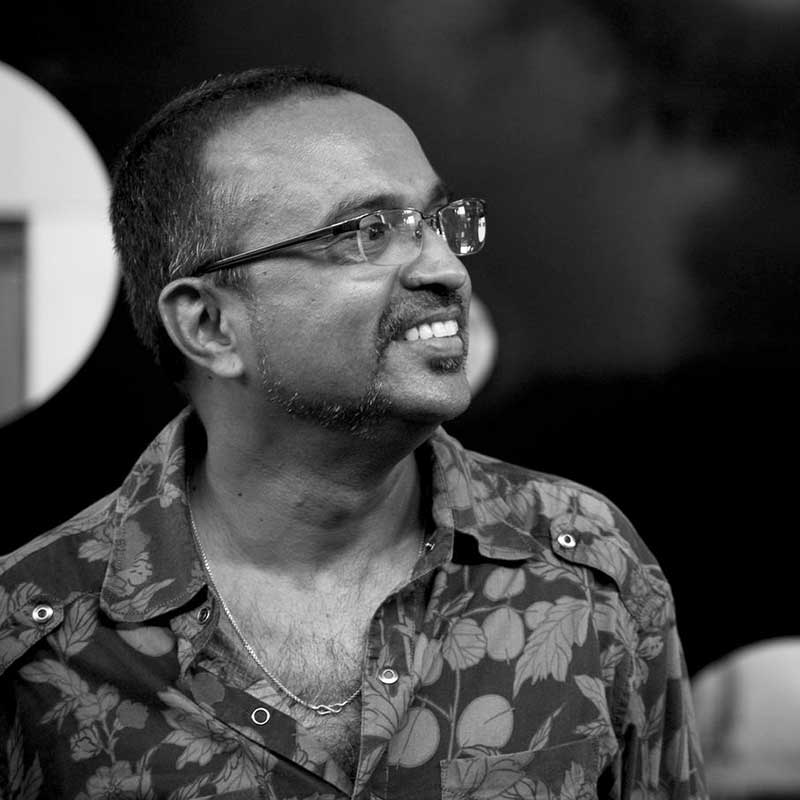
Sunil Gawde is a contemporary artist based in Mumbai. Born in 1960, he graduated from the J.J. School of Art in 1980. Despite his art education, Gawde chose to take a job at the Bombay Port Trust, where he worked until 1995. Through his tenure at the Port Trust, he remained alive to his surroundings, incorporating Bombay’s dockyards and wharves into his paintings. The peeling layers of paint on a ship’s helm, for instance, echoed his own philosophy of the canvas as palimpsest: “That is the logic of my paintings,” said Gawde, “to strip the overlayers partially, so that earlier histories may be revealed.”
Like his city he too is in a constant flow of transformation. Rooted in the tradition of being contemporary that is the leit motif of the city he brings an amalgam of unusual perspective married to a high degree of aesthetic sensibility. A multilayered philosophic underpinning to his output leavened by wit.
His important solo shows include Sour Amrosia at Gallerie Rabouan Moussion, Paris, ‘Swirling Blades’, ARKS Gallery London; ‘Radium Grass’, Macintosh Museum, Glasgow; ‘Oblique’ at Mumbai, Baroda, Chennai and New Delhi, ‘1mm’, Mumbai; ‘8 seconds ahead of time’, Bangalore.
His artistic life history includes important way stops at the 53rd Venice Biennale with the two ton kinetic piece ‘Alliteration’ in the Arsenal ‘Making Worlds’ at the 53rd Venice Biennale, was curated by Daniel Birnbaum in 2009; this art work was also re-exhibited at Kunstmuseum Bochum, Germany in an exhibition titled ‘Sparsha’ curated by Thomas Hensolt in 2014; the razor blade garland ‘Virtually Untouchable’ for ‘Paris-Delhi-Bombay..’ curated by Sophie Duplaix and Fabrice Bousteau, Centre Pompidou, Paris, France in 2011; the 12 foot stainless steel pendulum ‘Vicious Circle’ for the event ‘Finding India’ MOCA (Museum of Contemporary Art), Taipei, Taiwan 2010; the famous gigantic ‘Blind Bulbs’, dominating Jumeira Beach for the special project ‘Gulf Art Fair’ in 2007.
Sunil believes that travelling with the moment, connecting with the moment, keeps you relevantly vibrantly alive. He lives and works in Mumbai.
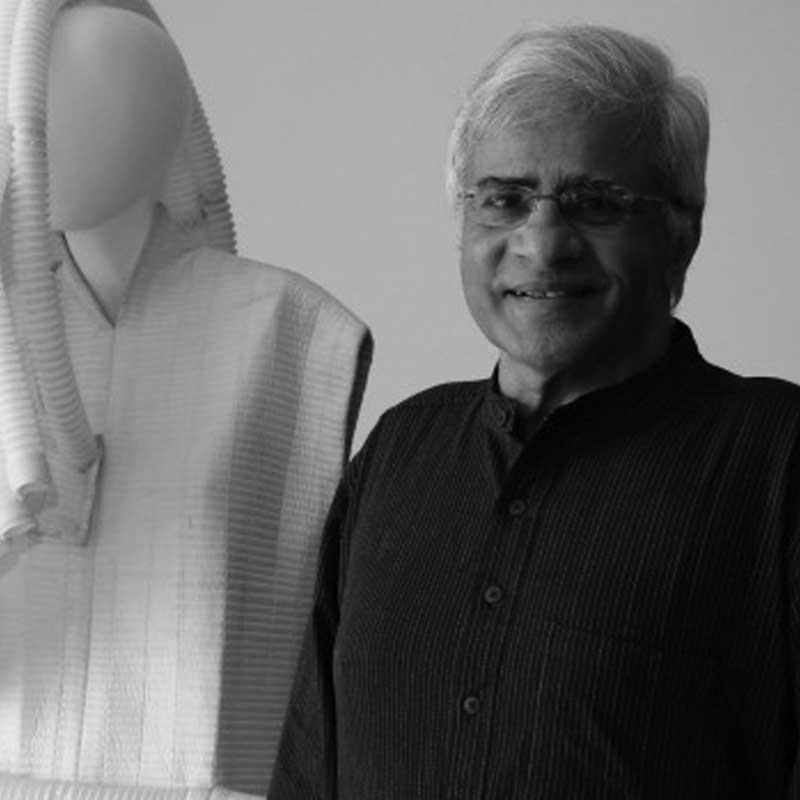
Vivan Sundaram was born in 1943. He graduated from the Faculty of Fine Arts in Baroda and the Slade School of Fine Arts in London in the 1970’s on a commonwealth scholarship. Sundaram is an artist who has been consistent in his pursuit of politically honed art.
Vivan is a key figure in Indian contemporary art who has moved away from the enterprise of easel painting into the realm of versatile mediums over the last decade. Sundaram’s style followed the narrative tradition till the late 80’s. In 1991, he responded to the Gulf War by breaking out of the two dimensional canvas and moving towards a conceptually oriented practice by experimenting with unconventional materials such as handmade paper stained with engine oil and charcoal. The Jehangir Nicholson Collection boasts of a work titled ‘Eclipse’ using similar mediums where a small drawing of Saddam Hussein can be found amongst the catastrophical illustrations of the war.
In 1972, Sundaram organised a retrospective for his cousin- renowned artist Amrita Sher-Gill and edited an anthology of her work. He was also an active participant in the artists protest movement about which he created a single channel video titled, ‘To Draw a Line’ in 2007. Several hands came together to create the site specific installation at M. S. University, Baroda where elements like notions of erasure, of trace, of collaboration and of performance become significant.The performance survives as a creative video document. This video was exhibited at ‘The Journey is the Destination: The Artists Journey between Then and Now’ at The Jehangir Nicholson Gallery, CSMVS in 2016, which traced the journeys of eight artists that were part of the Jehangir Nichoslon Collection.
Recently, in 2017 Sundaram supported by the Vadhera Art Gallery presented a monumental installation titled ‘Meanings of Failed Action, Insurrection 1946’ at the Coomaraswamy Hall, CSMVS. It featured a large steel and aluminium container with the capacity of 40 people seating at a time. It played a sound work that merged archival and contemporary recordings. This brought about a little remembered event that becomes a catalyst for developing interventionalist strategies.
Several of his recent projects involving the use of photographs, found objects, video and three-dimensional constructs in a variety of materials are expressly collaborative. His role here becomes that of an arranger, a conductor, a curator that probes identities in the contemporary international context.Some of his recent exhibitions have had the appearance of meticulously presented mini-museums, each one geared to the expression of a set of conceptual meanings that are coded into every detail of the organized space.
Vivan Sundaram lives and works in New Delhi, where he is a visiting professor at the Jamia Milia Islamia University.
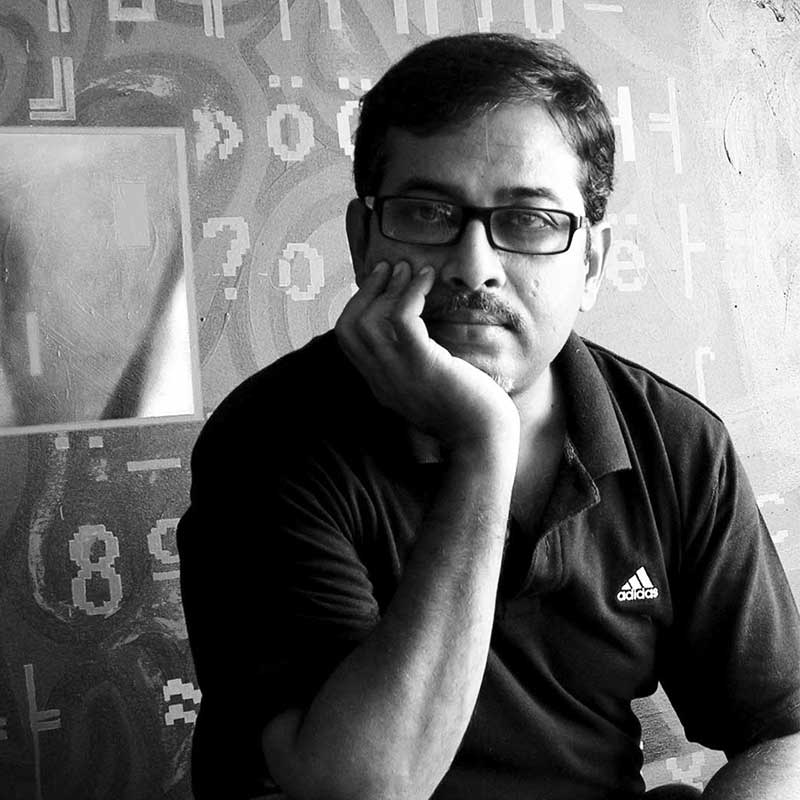
Baiju Parthan was born in 1956 in Mumbai. He is a contemporary artist based in Mumbai, known for his intermedia works. While elaborating the workings of a mysterious inner universe through his paintings, Parthan has combined his painterly concerns with his explorations of cyberspace to produce a series of provocative, richly textured installations. He aims to generate fresh metaphors and symbols that have the potential to expand the range of meanings that we can wrestle out of life and reality.
The direction of his art took another twist after the artist got hooked to philosophy – the understanding of the self as perceived in the western and eastern ways of thinking. How you create art is defined by the way the self is organized. His quest to create is more to do with knowledge.
“Every new bit of knowledge is never undone, he believes, and tries and transforms himself through learning how far one can extend oneself into one’s own self, one’s family, the society and the nation. Having lived in an inflated personal bubble, engrossed in his own worldly pursuits, he decided at some point that maybe he was not being fair to the rest of his life.”
The artist worked with traditional media like painting on canvas and shifted to sourcing materials from newspapers, television, internet along with ancient cosmological diagrams, scientific charts and satellite maps as well as new media which range from interactive programming based art, large scale lenticular prints on metallic surfaces. Both these areas pose their own challenges and also expand the scope of what he can do. Parthan addresses the blurring boundaries in modern life.
Parthan has exhibited widely in India and abroad. He lives and works in Mumbai.
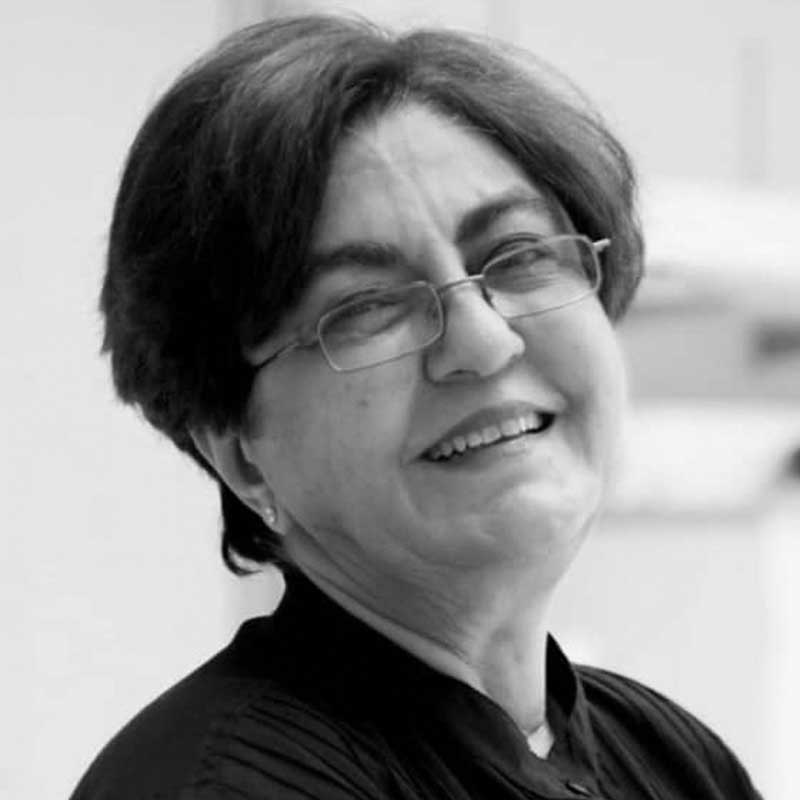
Nalini Malani was born in 1946 in Karachi. She’s an established multimedia artist who adapts traditional skills to new technology. She graduated with a diploma in Fine Arts from the JJ School of Art, Mumbai in 1969. In 1970, she received a French scholarship for Fine Arts to study in Paris. In 1984, she received an art fellowship from the Government of India.
Committed to social activism in her art, much of her work is consciously political. In the 70’s her themes explore male aggression, gender based violence, marginalization of the vulnerable and are about female identity-the image of the woman destroyed is a recurring one. As art critic Geeta Kapur has pointed out from early in her work, “Malani introduced female trauma as the subject matter in her work. She has drawn on myth, legend, cultural history and literature recreating archetypal figures like Sita, Radha, Medea and Lewis Carroll’s Alice to retell stories of women’s suffering.”
Her earlier works are expressionist while her works from the 70’s become increasingly narrative. Over the 80’s her works become more multilayered and fragmented and embraced other issues such as poverty, hunger and homelessness.
In 1989 Malani made books using the concertina format where she covered both sides of the paper with paintings and monotypes. In the 90’s Malani began combining painterly and performance, video and cinematic elements.
Malani’s work is influenced by her experiences as a refugee of the Partition of India. She places inherited iconographies and cherished cultural stereotypes under pressure. Her point of view is unwaveringly urban and internationalist, and unsparing in its condemnation of a cynical nationalism that exploits the beliefs of the masses. Hers is an art of excess, going beyond the boundaries of legitimized narrative, excessive the conventional and initiating dialogue.
Characteristics of her work have been the gradual movement towards new media, international collaboration and expanding dimensions of the pictorial surface into the surrounding space as ephemeral wall drawing, installation, shadow play, multi projection works and theatre.
Malani has several residences, solo exhibitions, group exhibitions, videography, performance and installation collaborations all over the globe to her credit. She lives and works in Mumbai.